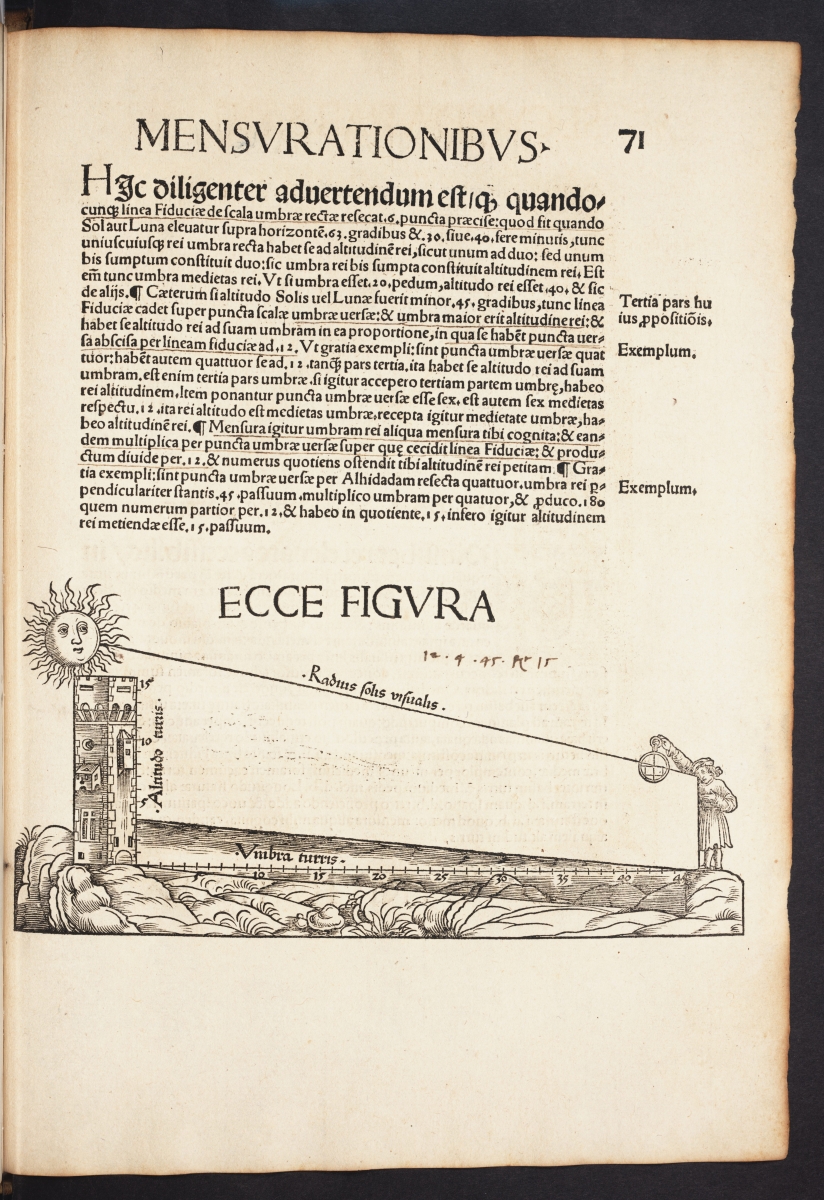- About MAA
- Membership
- MAA Publications
- Periodicals
- Blogs
- MAA Book Series
- MAA Press (an imprint of the AMS)
- MAA Notes
- MAA Reviews
- Mathematical Communication
- Information for Libraries
- Author Resources
- Advertise with MAA
- Meetings
- Competitions
- Programs
- Communities
- MAA Sections
- SIGMAA
- MAA Connect
- Students
- MAA Awards
- Awards Booklets
- Writing Awards
- Teaching Awards
- Service Awards
- Research Awards
- Lecture Awards
- Putnam Competition Individual and Team Winners
- D. E. Shaw Group AMC 8 Awards & Certificates
- Maryam Mirzakhani AMC 10 A Awards & Certificates
- Two Sigma AMC 10 B Awards & Certificates
- Jane Street AMC 12 A Awards & Certificates
- Akamai AMC 12 B Awards & Certificates
- High School Teachers
- News
You are here
Mathematical Treasure: Johann Stoeffler’s Elucidatio fabricae vsusque astrolabii
German mathematician and astronomer Johann Stoeffler (or Johannes Stöffler) wrote an influential book with the title Elucidatio fabricae vsusque astrolabii, on how to make and use an astrolabe. First published in 1513, the book went through 16 editions by the year 1620. According to the Oxford Museum of the History of Science, it was “one of the most influential books on a scientific instrument ever to be published. . . . Many authors of the many books on mathematical instruments to be published in the 16th century followed Stöffler’s example.”
The image below is the title page of a 1524 edition at the Linda Hall Library of Science, Engineering, and Technology in Kansas City, Missouri. The call number is CE73.S7 1518.

The first part of the book deals with the construction of astrolabes. The next image is the start of a section in the Second Part of the book about various types of geometry, both theoretical and practical. Near the center of the page is a listing of different units of measure including digit (finger), palmus (hand), pes (foot), cubit, passus (pace), pertica (perch or rod), stadium (furlong), miliarium (mile), and leuca (league). In the center of the page are line segments showing the length of a digit and hand, and on the side of the page is a line segment for a foot. The relations among the units are given: a hand is 4 digits, a foot is 4 hands (today a foot is considered 3 hands), a cubit is a foot and a half, a pace is 5 feet (today a pace is 2.5 feet), a rod is 10 feet (today a rod is 16.5 feet), a stadium/furlong is 125 paces (named after stando, the length Hercules could run in one breath or the length after which youth running would stop for a rest), a mile is 8 furlongs or 1000 paces (hence its name), and a league is a mile and a half or 1500 paces.

The second part of the book then gives instructions on taking measurements of objects such as towers and wells using an astrolabe, and includes many figures such as the one below which shows a man using an astrolabe to measure the height of a tower based on the length of its shadow.

A digital scan is available in the Linda Hall Library Digital Collections. An English translation of the 1553 edition of Stoeffler’s Elucidatio exists. A copy of the translation is also available at the Linda Hall Library, so one could compare the Latin 1524 edition side-by-side with an English translation of the 1553 edition.
Images in this article are courtesy of the Linda Hall Library of Science, Engineering & Technology and used with permission. The Linda Hall Library makes available all existing digital images from its collection that are in the public domain to be used for any purpose under the terms of a Creative Commons License CC by 4.0. The Library’s preferred credit line for all use is: “Courtesy of The Linda Hall Library of Science, Engineering & Technology.”
Reference
Stoeffler's Elucidatio. Paris, 1553. Translated and edited by Alessandro Gunella and John Lamprey. Cheyenne, Wyo.: Classical Science Press, 2007.
Cynthia J. Huffman (Pittsburg State University), "Mathematical Treasure: Johann Stoeffler’s Elucidatio fabricae vsusque astrolabii," Convergence (June 2018)




